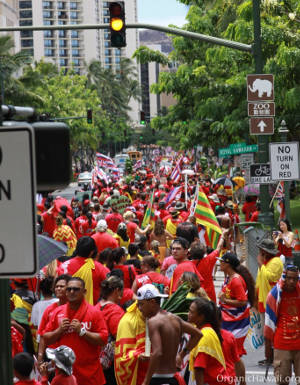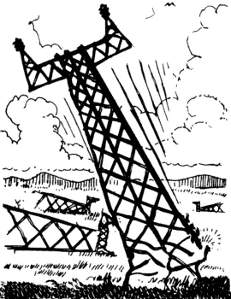What: Puna Geothermal Venture (PGV) community meeting
When: January 19, @ 6:30pm.
Where: Pahoa High School Cafeteria.
Why: PGV plans to drill without following the county ordinance that prohibits drilling between 7 PM and 7 AM
The county representatives for Puna are looking out for geothermal interests at the expense of community health. Following is an email alert from Bob Petricci of Puna Pono Alliance:
Geothermal Update
Drilling Alert
PGV has joined forces with Puna Council reps Greggor Illigan and Danny Paleka to actively campaign against the night time drilling ban we enacted to protect our community from PGV’s previous impacts due to 20 years of poor drilling practices.
Specifically, Paleka and Illigan support PGV’s stated intention to drill 24/7 in violation of the night time drilling ban.
Several major accidents and missteps at the PGV power plant last year resulted in harm to our community again, and both DOH and EPA cited PGV last year for numerous violations of their permits.
In discounting and essentially disregarding what this community has endured at the hands of PGV, both council members Illigan and Paleka have said publicly they support PGV intention to drill at night regardless of the law. That of course is in direct conflict with the communities best interest. These council reps are doing this with no legal experience to speak of and without even bothering to ask for a legal opinion from the Corporation Council. They instead are relying on a special interest (PGV) to interpret the law. This is an example of how bad government works to the detriment of the community, we should shine a light on this type of improper behavior by our our elected officials. In this case corporate interest have clearly been put ahead of the public interest by these 2 elected officials to benefit a special interest at expense of our community.
I went to Danny’s office to talk to him about this and ask for a copy of corp council’s opinion, he told me he never talked to them. He then promised to do so promptly, but don’t hold your breath. We will probably have to do that as well.
I also spoke with Council member Aaron Chung (an attorney), who told me he disagrees with Paleka, Illigan, and PGV. In fact he agrees with PPA and the community – the law applies to PGV as written. He based his opinion as do we on reading the law and the permit requirements that “PGV obey that law and all county laws.
In my opinion it is dangerous and unfortunate that Illigan and Paleka appear to be playing fast and loose with the best interest of our Puna community to benefit a special interest (PGV). I see no valid reason for them to fight for PGV against the community on this law. It is a sad commentary on the state of our county government.
Puna Pono Alliance needs your support now, this is our chance, let PGV know how you feel about the planned drilling now – before it starts.
Background
On January 19, next Monday, Puna Geothermal Venture is holding a community meeting. At that meeting they will be discussing upcoming drilling, currently scheduled from late January until March. During that drilling, PGV does not plan to comply with a county ordinance that requires drilling activity to stop between 7 PM and 7 AM.
This intended action is an insult to the community and to those who must bear the personal cost of PGV actions. If you live close to PGV, we ask that you come to the meeting in a show of solidarity in which we say you must stop placing community families second. If you live elsewhere we ask that you show your support for our neighbors that are being sacrificed to corporate convenience.
Thank you again for your past support in helping us defend our neighborhood from industrialization. We passed a law, now we need to let them know we intend to see the law enforced.
PPA Noise Committee
As you may have heard, PGV is planning to begin drilling a new well on January 25 and they say they expect it to go on for 3 months. The last time they drilled a well, it went on for 5 1/2 months and it made life miserable for people near the plant.
Despite a Hawaii County ordinance which bans nighttime drilling from 7 pm to 7 am, passed by the Hawaii County Council in response to PGV’s last drill , PGV says they will drill day and night because–they say–the ordinance does not apply to them.
We need the help of those that live close to the plant because if we don’t step up, PGV will continue to drill day and night–and they drill new wells every few years.
Paul Kuykendall and Suzanne Wakelin are working to document the noise and its impact on neighbors to force the county and state to address it as a health and quality of life issue.
The good news is that we live in an age where we can capture data via crowd-sourcing that will build our case with some very cool, high tech tools. We are going to use NoiseTube to collect and collate data using mobile phones which we can later analyze and show on google maps to quantify the noise impact.
To learn more about NoiseTube, please read this short Scientific American article
Or visit the NoiseTube webpage for more information:
We need your help to be successful. Please support us by doing the following:
1. Email lists@punapono.com with your phone number and consent to receive email updates on this project.
2. Please meet us at HAAS this Tuesday January 20 at 3:30 pm (before the usual Puna Pono Meeting) for a 30 minute training on how to use the crowdsourcing App
Please be prompt because we will only have 30 minutes.
3. If you can, please download the free app to your mobile phone by following the link below. It has instructions on how to download to an Iphone and an Android phone. If you do it before the training, we can show you how to use it.
4. Please share this email with friends and neighbors who could be negatively affected by the drilling noise.
If you want to help us stop PGV from illegally drilling at night, we need help this Monday,
If you want to connect with PPA, please come to the 4 o’clock meeting this Tuesday at HAAS School.

